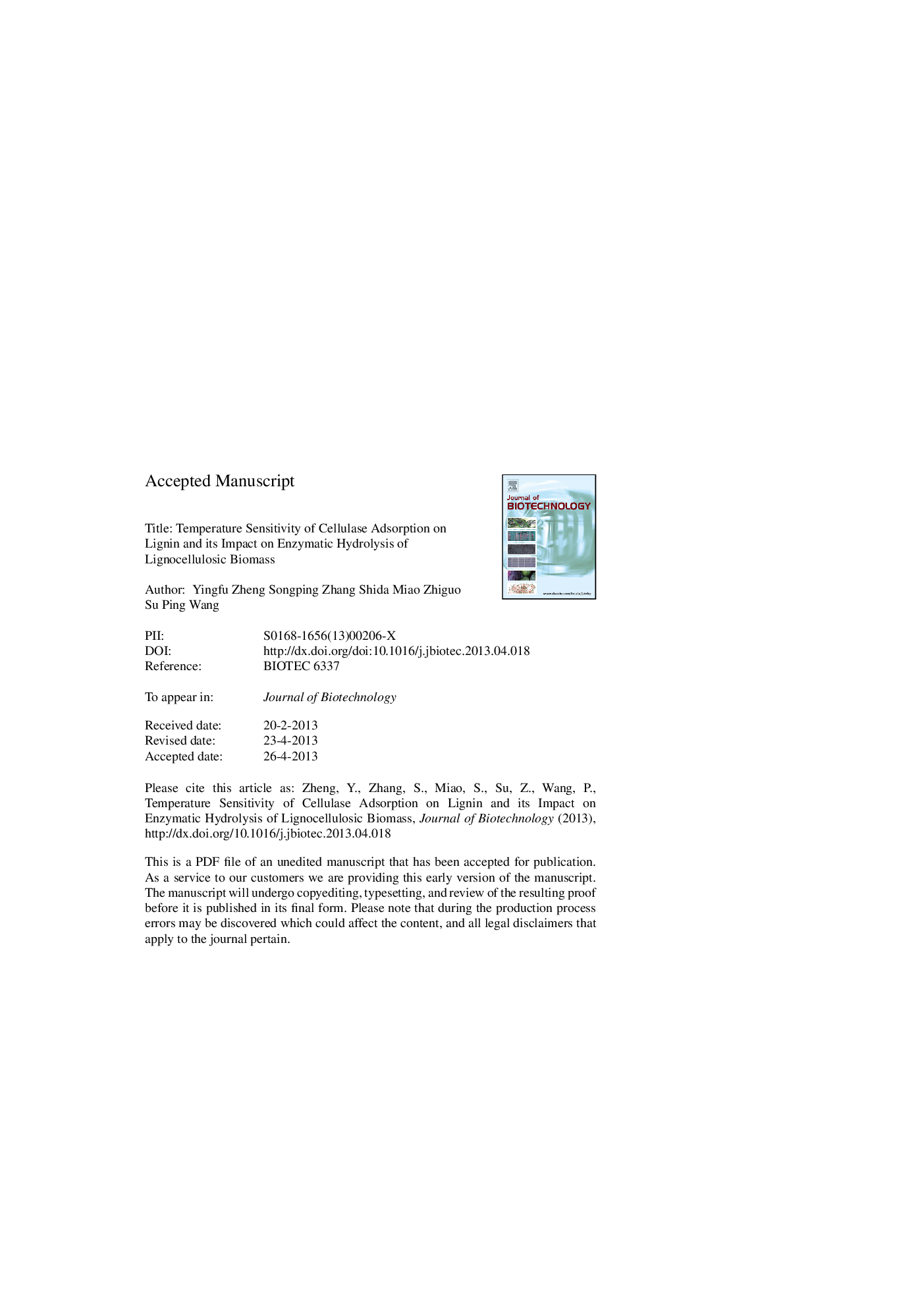| Article ID | Journal | Published Year | Pages | File Type |
|---|---|---|---|---|
| 6491800 | Journal of Biotechnology | 2013 | 39 Pages |
Abstract
Unproductive enzyme adsorption is an important factor in addition to steric hindrance of lignin that limits the enzymatic hydrolysis of lignocellulosic biomass. While both are important factors, enzymatic hydrolysis of pretreated biomass is most likely conducted in the presence of certain amount of lignin residues that may not necessarily present accessibility hindrance, but can competitively absorb the enzyme. This paper presents a study with purified lignin samples to elucidate the role of unproductive enzyme adsorption. It appeared that lignin adsorbed cellulase quickly at 4 °C with adsorption equilibrium reached within 1 h, similar to that observed for crystalline cellulose. Increasing temperature to 50 °C (typical hydrolytic reaction condition) facilitated the rate of cellulase adsorption on cellulose with a peak of adsorption reached at 0.25 h; however, adsorption on lignin was surprisingly slower and took over 12 h to reach equilibrium, which was accompanied with a 10-fold increase in adsorption capacity. Despite the high adsorption capacity of lignin (which is comparable to that of cellulose) at 50 °C, the presence of added lignin imposed only minimal impact on the enzyme apparent activity, most likely due to the slow adsorption kinetics of lignin.
Related Topics
Physical Sciences and Engineering
Chemical Engineering
Bioengineering
Authors
Yingfu Zheng, Songping Zhang, Shida Miao, Zhiguo Su, Ping Wang,
